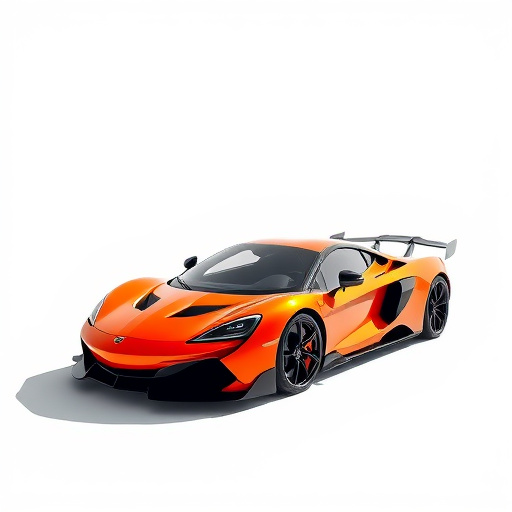Dry and oiled filter intakes serve different purposes in dust collection systems: dry filters rely on mechanical means for particle capture, offering simplicity, cost-effectiveness, and easy maintenance; while oiled filters use an oil coating to trap microscopic particles, requiring more frequent replacements but excelling in handling fine dust. Beyond capacity, efficiency and performance are key considerations; dry filters offer high flow rates and low pressure drops for clean environments, while oiled filters prioritize trapping tiny debris due to oil's surface tension, causing higher pressure drops and potentially lower flow rates. In automotive filtration, dry filters are ideal for everyday driving, while oiled filter intakes protect against larger debris in off-road conditions or areas with high contamination, requiring regular oil changes but ensuring superior durability and performance in extreme scenarios.
“Unveiling the battle between dry filter vs oiled filter intakes, this article delves into the intricate world of dust capacity comparison. We explore the fundamental differences and intricacies, dissecting their unique advantages and drawbacks through a lens of efficiency and performance. From understanding basic concepts to practical applications, our analysis offers insights for informed decisions. Discover how these contrasting filters navigate challenging environments, ensuring optimal air intake and engine health.”
- Dry Filter vs Oiled Filter Intakes: Understanding the Basics
- Efficiency and Performance Comparison: Dust Capacity Analysis
- Practical Applications and Considerations for Each Filter Type
Dry Filter vs Oiled Filter Intakes: Understanding the Basics

In the realm of dust collection systems, understanding the distinction between dry filters and oiled filters is paramount for efficient particle removal. Dry filter intakes operate by using a combination of mechanical and air pressure to trap particles within a fibrous media. As air passes through the filter, contaminants are captured, preventing them from escaping into the workspace. This type of intake is known for its simplicity, cost-effectiveness, and ease of maintenance, making it a popular choice for various applications.
On the other hand, oiled filter intakes introduce a layer of oil onto the filter media, creating a sticky surface that traps microscopic particles effectively. The oil acts as an additional barrier, ensuring even the smallest contaminants stick to the filter. While this method may require more frequent filter replacement and maintenance due to the accumulation of debris, oiled filters excel in handling fine dust and particulate matter, making them ideal for industries dealing with high-quality standards and precise air cleanliness.
Efficiency and Performance Comparison: Dust Capacity Analysis

When comparing dust capacity, it’s crucial to look beyond just the numbers and consider efficiency and performance. Dry filter versus oiled filter intakes present distinct advantages and disadvantages. Dry filters, known for their simplicity, offer high flow rates and relatively low pressure drops, making them efficient for clean environments. However, they tend to be less effective in capturing fine particles, allowing smaller dust particles to pass through. On the other hand, oiled filters excel at trapping microscopic debris due to the oil’s surface tension, which captures even the tiniest particles. While this results in higher pressure drops and potentially lower flow rates, it ensures a more thorough filtration process.
This analysis underscores the trade-off between flow rate and particle capture efficiency. For applications requiring maximum air flow and minimal pressure drop, dry filters are often preferred. Conversely, oiled filters are ideal when prioritizing fine dust collection and maintaining cleaner air quality, despite potential reductions in airflow.
Practical Applications and Considerations for Each Filter Type

In the realm of automotive filtration, understanding the distinctions between dry and oiled filter intakes is paramount for enthusiasts and mechanics alike. Dry filters, as the name suggests, are unsoaked in oil and typically employ a paper or textile media. They excel in capturing fine particles and providing efficient air flow, making them ideal for everyday driving conditions. These filters are often preferred due to their ease of maintenance; a simple rinse and reuse capability sets them apart, reducing cost and waste.
On the other hand, oiled filter intakes immerse their media in a thin layer of oil, usually synthetic. This design offers superior protection against larger debris, making them suitable for off-road or high-contamination environments. While requiring more meticulous care—regular oil changes are crucial—oiled filters deliver exceptional durability and performance under extreme conditions. For rugged terrain or performance-oriented vehicles, this type of filter ensures a reliable air supply, enhancing engine efficiency and longevity.
In comparing dry filters and oiled filters for intakes, understanding their distinct capabilities is key. While dry filters excel in efficiency and performance, particularly in high-dust environments, oiled filters offer a more controlled air flow with lower pressure drop. The choice between them depends on specific applications and operational conditions. By carefully considering these factors, users can select the optimal system for their needs, ensuring efficient dust collection and improved equipment longevity.














